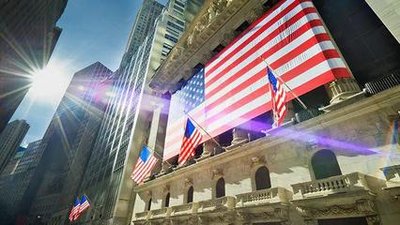
In today's changing global economy, every move of the Federal Reserve is like an undercurrent under the sea level, profoundly affecting the direction of the world economy. Recently, Atlanta Fed President Bostic on September interest rate cut is "open" comments, no doubt in the global financial market dropped a bombshell. However, behind this seemingly mild statement, what economic logic and deep considerations are hidden? This article will take a closer look at this statement, trying to uncover the truth behind it and its potential impact.
Bostic's "openness" to a September rate cut, on the surface, appears to be a flexible response to the current economic situation, but in fact reveals the Fed's delicate balance in monetary policy adjustments. On the one hand, inflationary pressures have eased as global supply chains gradually recover and energy and food prices have eased, providing room for rate cuts. On the other hand, signs of cooling in the labor market, especially the rise in the unemployment rate, have forced the Fed to review its policy stance so as not to tighten too much and cause a recession.
However, it is worth noting that behind the word "open", it is actually a cautious prediction of future economic trends and an acknowledgement of uncertainty. As the central bank of central banks for the global economy, any fine-tuning of the Fed's policy could set off a chain reaction. Therefore, Bostic's statement is more like a tentative balloon release, designed to observe the market reaction and leave room for subsequent monetary policy adjustments.
Bostic stressed that while price pressures ease, the Fed must focus on its goal of full employment. The view highlights the Fed's difficult choice between inflation and employment. The Fed has long followed a "two-pillar" policy framework of stable prices and maximum employment. For now, while inflation has eased, rising unemployment is a direct test of the economy's resilience. How to find the best balance between the two becomes the biggest challenge for the Fed.
Bostic's reference to "not being late" is actually an early warning of the risk of a recession.
Historically, the Fed has repeatedly missed the best time to intervene because of delayed policy adjustments, leading to deep recessions. Therefore, the current "open" attitude of the Federal Reserve on the issue of interest rate cuts is also an advance layout of the possible upcoming downward pressure on the economy. By cutting interest rates at the right time, it lowers borrowing costs and stimulates investment and consumption, thereby cushioning the impact of the recession.
While rate cuts are seen as an effective response to an economic slowdown, their effects are not always immediate. In the context of globalization, the economies of various countries are interdependent, and it is often difficult for a single country to adjust its monetary policy independently. In addition, the long-term low interest rate environment may also lead to asset bubbles, debt accumulation and other negative effects, laying a hidden danger for future financial stability.
Bostic's statement undoubtedly intensified the market's speculation and game about the future direction of the Fed's policy.
Market participants will adjust their investment strategies based on this information and form new market expectations. However, such expectation-based investment behavior is often highly uncertain and volatile, which may lead to irrational fluctuations in the market and affect the stable development of the real economy.
As a means of aggregate control, interest rate reduction is difficult to effectively solve the deep-seated problems in the economic structure.
For example, problems such as inequality in the labor market and imbalance in the industrial structure cannot be solved by simply relying on monetary policy adjustment. Therefore, although Bostic's interest rate cut can attract market attention, if it is not combined with other structural reform measures, its effect will be greatly reduced.
Bostick's "open" comment on a September rate cut is not only a flexible response to the current economic situation, but also a subtle test of the future direction of policy.
Behind this statement, we see both the Fed's difficult choice between inflation and employment, and its deep concern about the risk of recession. However, the limitations of monetary policy, the game of market expectations, and the neglect of structural issues remind us of the need to maintain a clear head and critical thinking when looking at this issue.
How will the Fed's monetary policy adjustments evolve in the future? How will the global economy respond to these changes? These questions need to be explored and answered in practice. But you can be sure that no matter how the Fed adjusts its policy, its ultimate goal is to maintain economic stability and growth. Therefore, as market participants and observers, we should be more rational and objective, pay attention to the economic logic and deep considerations behind policy changes, and contribute our wisdom and strength to future economic development.

As 2026 approaches, the space sector is once again entering the public spotlight, becoming part of everyday discussion.
As 2026 approaches, the space sector is once again entering…
Microsoft CEO Satya Nadella recently launched a personal bl…
In the early hours of January 3, 2026, flames in the Caribb…
As 2026 begins, the euro area economy remains mired in a "w…
According to Xinhua News Agency, the Ministry of Agricultur…
Recently, the United States launched a military raid on Ven…